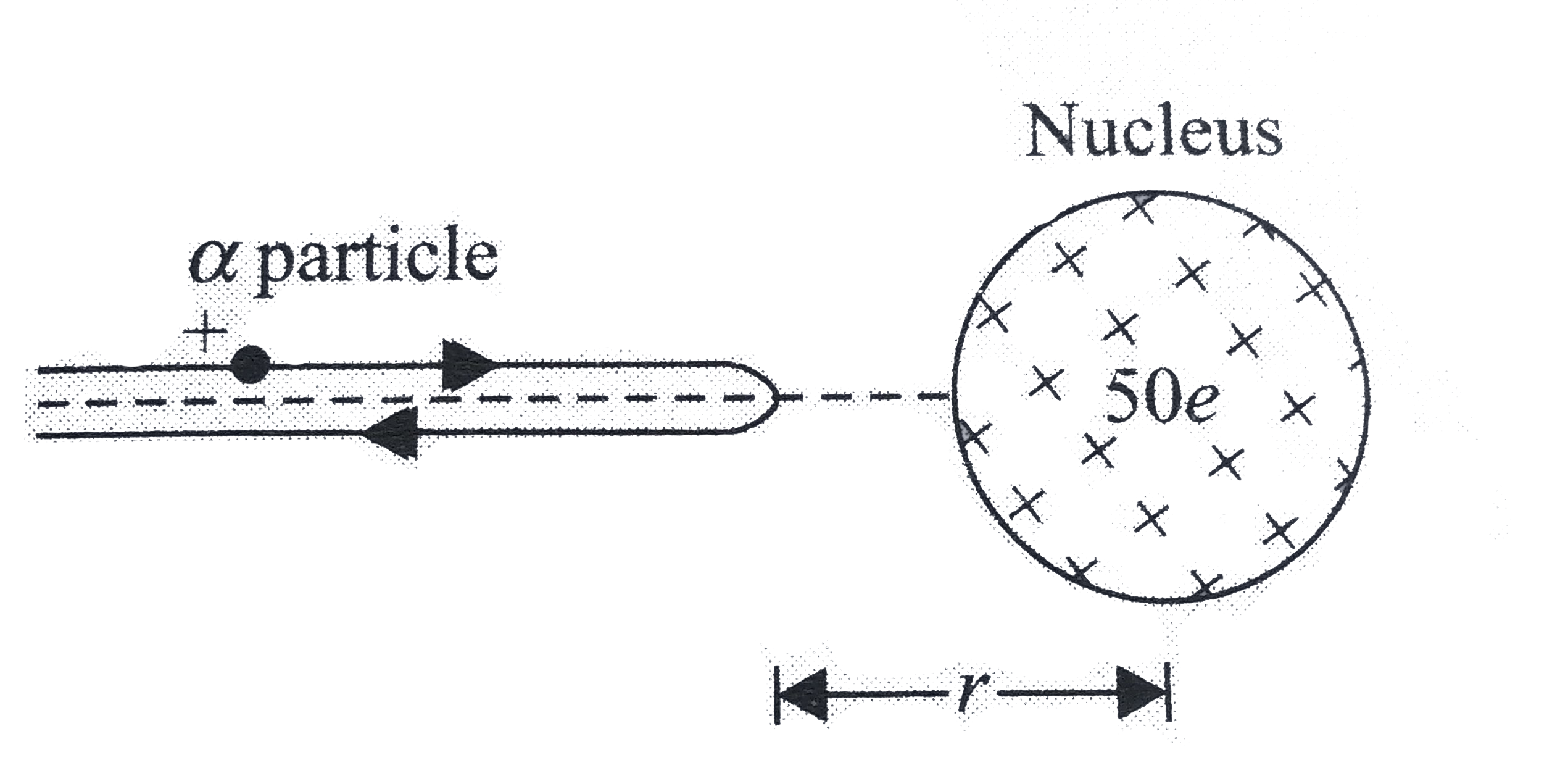A proton collides with a stationary deuteron to form a .3He nucleus. For this reaction to take place , the proton must have a minimum kinetic energy K0 . If instead , a deuteron collides with a stationary proton to make a .3He nucleus , then it must have minimum kinetic energy equal to
2K0
1.5K0
K0
K02
The correct Answer is:A
To solve the problem, we need to analyze the kinetic energy required for two different collision scenarios involving a proton and a deuteron.
1. Understanding the Reaction:
- In the first scenario, a proton (p) collides with a stationary deuteron (d) to form a helium-3 nucleus (³He).
- The reaction can be represented as:
p+d→3He
2. Minimum Kinetic Energy for Proton:
- For the proton to initiate the reaction, it must have a minimum kinetic energy K0.
- The kinetic energy of the proton can be expressed as:
K0=12mpv2
- Here, mp is the mass of the proton and v is its velocity.
3. Analyzing the Second Scenario:
- In the second scenario, we have a deuteron colliding with a stationary proton.
- The reaction can be represented as:
d+p→3He
4. Mass Relationship:
- The mass of the deuteron (md) is approximately twice the mass of the proton:
md=2mp
5. Kinetic Energy of Deuteron:
- Let the minimum kinetic energy required for the deuteron in this scenario be K′.
- The kinetic energy of the deuteron can be expressed as:
K′=12mdv′2
- Substituting md=2mp:
K′=12(2mp)v′2
K′=mpv′2
6. Relating the Velocities:
- To find the relationship between the velocities v (of the proton in the first case) and v′ (of the deuteron in the second case), we note that for the same reaction to occur, the deuteron must have sufficient energy to compensate for its larger mass.
- Since the kinetic energy is proportional to the mass and the square of the velocity, we can relate the two energies:
K′=2K0
- This means that the minimum kinetic energy K′ required for the deuteron is twice that of the proton's minimum kinetic energy K0.
Final Result:
Thus, the minimum kinetic energy K′ required for the deuteron in the second scenario is:
K′=2K0
- In the first scenario, a proton (p) collides with a stationary deuteron (d) to form a helium-3 nucleus (³He).
- The reaction can be represented as:
p+d→3He
- For the proton to initiate the reaction, it must have a minimum kinetic energy K0.
- The kinetic energy of the proton can be expressed as:
K0=12mpv2
- Here, mp is the mass of the proton and v is its velocity.
- In the second scenario, we have a deuteron colliding with a stationary proton.
- The reaction can be represented as:
d+p→3He
- The mass of the deuteron (md) is approximately twice the mass of the proton:
md=2mp
- Let the minimum kinetic energy required for the deuteron in this scenario be K′.
- The kinetic energy of the deuteron can be expressed as:
K′=12mdv′2
- Substituting md=2mp:
K′=12(2mp)v′2
K′=mpv′2
- To find the relationship between the velocities v (of the proton in the first case) and v′ (of the deuteron in the second case), we note that for the same reaction to occur, the deuteron must have sufficient energy to compensate for its larger mass.
- Since the kinetic energy is proportional to the mass and the square of the velocity, we can relate the two energies:
K′=2K0
- This means that the minimum kinetic energy K′ required for the deuteron is twice that of the proton's minimum kinetic energy K0.
Thus, the minimum kinetic energy K′ required for the deuteron in the second scenario is:
K′=2K0
Similar Questions
A neutron collides elastically with an initially stationary deuteron. Find the fraction of the kinetic energy lost by the neutron in a head-on collision?
View SolutionAn electron and a proton have equal kinetic energies. They enter in a magnetic field perpendicularly, Then
View SolutionA hydrogen atom having kinetic energy E collides with a stationary hydrogen atom. Assume all motions are taking place along the line of motion of the moving hydrogen atom. For this situation, mark out the correct statement (s).
View SolutionSTATEMENT-1 : In the decay of a free neutron at rest, into a proton and electron, it has been predicated that a third particle must also be emitted because the emitted electrons do not have a definite kinetic energy.
and
STATEMENT-2 : For the simple decay of a stationary particle into two moving particles, the kinetic energies of the particle must have a sharply defined value.View SolutionA proton is bombarded on a stationary lithium nucleus. As a result of the collision, two α-particles are produced. If the direction of motion of the α-particles with the initial direction of motion makes an angles cos−1(1/4), find the kinetic energy of the striking proton. Given, binding energies per nucleon of Li7 and He4 are 5.60 and 7.06 MeV, respectively.
(Assume mass of proton ≈ mass of neutron).View SolutionAn accelerated electron is absorbed by a proton at rest and a neutron is formed. Write the reaction equation. Assuming that the resulting neutron remains at rest, calculate the minimum kinetic energy of the electron at which the reaction is possible.
View SolutionTo activate the reaction (n,α) with stationary B11 nuclei, neutrons must have the activation kinetic energy Tth=4.0MeV(n,α) means that n is bombarded to obtain α. Find the energy of this reaction.
View SolutionAn alpha particle with kinetic energy 10MeV is heading toward a stationary tin nucleus of atomic number 50. Calculate the distance of closest approach (Fig . 3.23).
 .View Solution
.View SolutionCalculate the minimum energy needed to separate a neutron form a nucleus with Z protons and N neutrons in terms of the masses MZ,N,MZ,N−1 and the mass of the neutron.
View SolutionA neutron having kinetic energy E0 collides with singly ionised He atom at rest and move along initial direction. Which of the following statement(s) is/are true for the above mentioned collision.
View Solution

